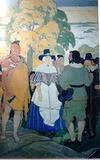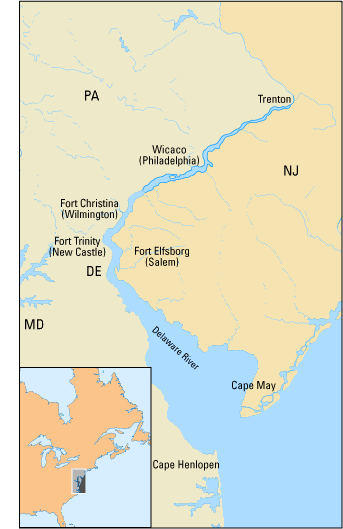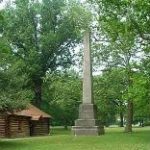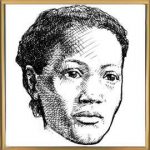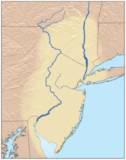The Year: 1638
Image: Sarah Kiersted Translating for Lenape chief Oratam
Painting depicts Sarah Kiersted, a Dutch woman in New Netherlands who learned the Lenape language and served Chief Oratam as a translator in his negotiations with Dutch colonists. She was rewarded by him in 1666 with a gift of 2260 acres of land on the Hackensack River.
The Lenape Nation
When Verrazano sailed into Delaware Bay in 1524, and when Henry Hudson cast anchor at Sandy Hook in 1609, the land was occupied by Native Americans. The Lenape Nation lived throughout what would become New Jersey. They were farmers, hunters, and fishermen.
At about the time white Europeans were turning their thoughts and ships toward the New World, a Native American named Oratam was rising to leadership in East Jersey. People sent out by the Dutch East India Company, and later by the Dutch West India Company, settled in New Amsterdam, present-day New York City.
The first settlement in New Jersey was at Bergen in 1618. Later Dutch settlers moved northward to this area. In some places, they found the land too dry, unlike Holland. This area, with the Hackensack River on one side and Overpeck Creek on the other, suited the Dutch perfectly. As one writer put it, “they thrived where they had to build dikes to keep out the river tides and could have water in their cellars 12 months a year!”
Chief Oratam
The Lenape sachem (chief), Oratam, a respected man of peace, was called upon by both Europeans and Native Americans to arbitrate disputes and negotiate peace treaties, and to witness early trade contracts. He tried throughout his life to keep peace between the Native Americans and the white men. He met frequently with the white men in New Amsterdam.
Oratam didn’t understand the Dutch language, and was unfamiliar with the European justice system, but he held a New Amsterdam housewife in high esteem, and relied on her wisdom and integrity in his peacemaking and diplomatic work.
Sarah Kiersted
Sarah Kiersted was the wife of Dr. Hans Kiersted, the doctor for the employees of the Dutch West India Company in New Amsterdam. The Kiersteds arrived in Manhattan sometime after 1626. Sarah learned the Native American Lenape language and served Chief Oratam as a translator in his negotiations with the Dutch colonists for many years.
Why Sarah learned the Lenape language, and how she became Chief Oratam’s trusted confidante and interpreter is unknown, but she became an important participant in disputes and in treaty negotiations during the turbulent years of the Dutch invasion and settlement of the Manhattan region.
In 1638, at nearly ninety years of age, Chief Oratam presented Sarah Kiersted with 2,260 acres of land, extending from the Hackensack River to Overpeck Creek, demonstrating his high regard for the Dutch woman who had honored the Lenapes by learning their language and devoting herself to their interests.
The following year, Mrs. Kiersted sold to Laurance Van Boskerk – “All that tract of meadow situated in Hackensack Province of East New Jersey Bounded on Ye east by ye River called Overpeck Creek, on ye South by Said creek, on ye West by ye upland and on ye North by ye Kiersted northernmost line containing in estimation four hundred and seventy acres” – for one pound.
Sarah Kiersted retained title to the rest of the land for a long time. In 1666, after the English had captured New Netherland, although he was not legally bound by Oratam’s land grant, Royal Governor Sir George Carteret confirmed the claim of Kiersted’s gift from Oratam.
In 1685, the author of a book, The Model Government of East Jersey, mentioned “a large tract of land for which Mrs. Sarah Kiersted of New York had a patent given by an old Indian Sachem in recompense for interpreting the Indian language, as there was occasion. There are some little families thereon.”
Even a hundred years later, deeds filed in Hackensack courthouse referred to the Kiersted Land Patent.
SOURCES
Historical Sketch of Teaneck
A Piece of Land Becomes a Town
